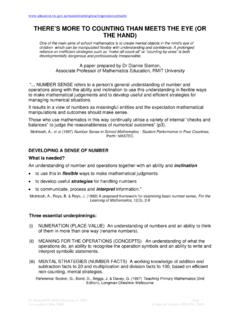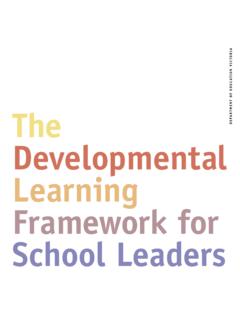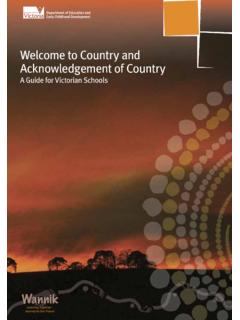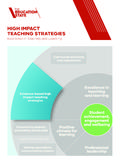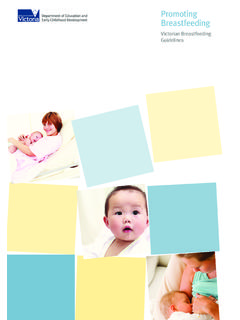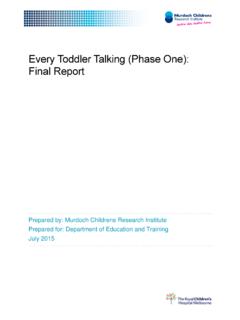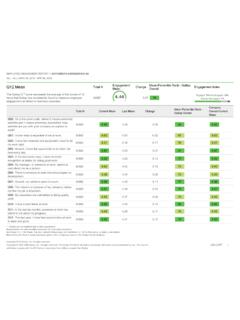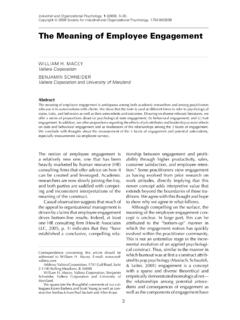Transcription of Managing Diverse and Inclusive Workplaces
1 Managing Diverse and Inclusive Workplaces Last updated 16 June 2011 TABLE OF CONTENTS CONTENTS PAGE OVERVIEW .. 2 THE DEMOGRAPHIC CONTEXT .. 2 ORGANISATIONAL PERFORMANCE AND WORKPLACE DIVERSITY .. 3 CREATING WORKFORCE DIVERSITY AND INCLUSION .. 5 TRAINING .. 7 Managing Diverse and Inclusive Workplaces Page 1 OVERVIEW The Department is committed to diversity and inclusion in providing the highest level of service to the Victorian community. As one of Victoria s largest employers the Department aims to create an organisation that is Diverse , fair and Inclusive . By reflecting the diversity of the Victorian community within its workforce and equipping staff with the necessary knowledge and skills to work with a Diverse community, the Department s service and business is enhanced.
2 Respect and diversity are also CORE values of the Department and the foundation for provision of equal employment opportunity. Managers, Principals and employees are expected to model Inclusive behaviours in the workplace and in their service provision to students, parents and the community. Diversity management is underpinned by Commonwealth and State anti discrimination law, the Multicultural Victoria Act 2011, the Disability Act 2006, the Public Administration Act 2004, and the Education and Training Reform Act 2006. It includes whole of government diversity requirements such as Cultural and Linguistic Diversity (CALD) planning, the Disability Action Plan and Aboriginal Inclusion and Employment Plans. Diversity management in the Department also includes policy and initiatives in relation to gender equity, sexual diversity and flexible work for employee work & family life balance.
3 Diversity management is included in corporate, business and strategic planning processes. Managers and principals are responsible for contributing to better diversity management and achieving the outcomes it can deliver. Diversity in the Department evolves with changes in government policy and legislation and is linked to accountability frameworks. In turn, diversity monitoring and reporting is undertaken through whole of government and departmental accountability frameworks and is included within the Annual Report. THE DEMOGRAPHIC CONTEXT Current trends making diversity management an imperative are: globalisation of business and cultures interacting across borders as a result of this process an economy increasingly focused on services and knowledge industries competition for talent in the context of an aging population labour market skill shortages changing demographics The Department is responsive to the rapidly changing demographics of the Victorian community and seeks to recruit and retain a workforce that reflects this diversity.
4 Ageing Due to the ageing population, the number of people retiring and exiting the workforce is outpacing the number of school leavers and new entrants coming into the workforce. The increasing gap between workforce demand and workforce supply provides opportunities to secure skills from Diverse groups and previously untapped talent in the Victorian community. Managing Diverse and Inclusive Workplaces Page 2 Gender The proportion of women in the Australian workforce and in leadership positions is increasing. In the Department, the percentage of female teachers has increased since the 1960's (52% in 1960 compared with 70% in 2009) in part as a result of legislation changes including women receiving equal pay to men for equal work; an increase in the number of women participating in higher education; and changes to employment conditions (Maternity, Family leave and Flexible Work Options).
5 The proportion of females in the Principal class has increased rapidly over the last decade and was per cent in 20091. Victorians from culturally and linguistically Diverse backgrounds of Victoria's population were born overseas. have a parent who was born overseas. Victorians come from more than 200 countries and speak more than 230 languages and dialects. Workforce management must take into account this diversity to optimise business Disability 1 in 5 Victorians currently have some form of disability. As the population ages, this proportion is expected to increase as older people are much more likely to have an impairment which limits their function. For example, the prevalence of profound or severe core activity limiting disability increases from 3% of 0 4 year olds to 10% of 65 69 year Overall changes in the wider population and in labour market demographics are driving increased diversity.
6 Attraction, engagement and retention strategies are being adopted to harness the skills of Diverse groups. New opportunities are emerging for increased workforce participation by indigenous people, women and carers, mature age people, people with a disability and immigrants. Organisational development strategies are deployed to effect cultural change, minimise stereotypes and increase diversity competence. The implications of diversity are being recognised and incorporated into strategic planning. ORGANISATIONAL PERFORMANCE AND WORKPLACE DIVERSITY Diversity management is recognised in contemporary human resource management as a key to improving organisational performance, client service delivery and employee satisfaction .
7 Organisations may take a diversity approach to improve the performance of the individual, team or organisation. Research shows that diversity management makes a positive difference to organisational performance and culture. Diversity management enables the Department to better respond to the education challenges of the 21st century and improve our understanding of our Diverse workforce, students and community. Diversity management is built on the foundation of equal opportunity in the public sector where: employment decisions are based on merit; employees are treated fairly and reasonably; equal employment opportunity (EEO) is provided; human rights are upheld; avenues of redress against unfair or unreasonable treatment are available; and a career public service is fostered.
8 See the public sector employment principles. In providing for equal employment opportunity, processes in the public sector ensure that diversity is valued and recognised, there is freedom from discrimination and harassment, there is a focus on essential job requirements and best practice is pursued. Diversity management essentially moves an organisation from compliance to good management. 1 Department of Education and Early Childhood Development Datazone. 2 Victorian Multicultural Commission website 3 Australian Bureau of Statistics, Disability, Ageing and Carers; Summary of Findings, 2003, p3 Managing Diverse and Inclusive Workplaces Page 3 Diversity Benefits Gender, cultural and generational diversity along with workplace flexibility are playing a significant part in impacting on organisational performance.
9 Taking a diversity approach has been shown to deliver the following benefits: being recognised as an employer of choice recruiting and retaining the best candidates from a broader talent pool reduced turnover better knowledge and understanding of the community we serve provision of equal employment opportunity and respectful Workplaces increased employee job satisfaction , recognition and productivity reduced absenteeism increased capacity to innovate in a Diverse marketplace being recognised as responsive to Diverse communities improving reputation and locally and globally competitive Attracting and Retaining Talent Diversity and inclusion attracts the best employees and leaders from the widest possible talent pool in a competitive labour market.
10 Candidates care about workplace diversity and judge an organisation s commitment to diversity by their perceptions of inclusion in the workforce. A Diverse and Inclusive organization increases employee intent to stay by as much as 24% (Corporate Leadership Council, 2010). Diversity management assists the Department to tap into new talent opportunities through use of business levers such as workforce planning that is aware of changing labour market factors and actively integrates and plans for employee diversity recruitment and retention policies and practices that target Diverse segments in the labour market professional development that increases capabilities of employees to work with difference and Diverse people and teams performance management and development processes that recognise and reward diversity and Inclusive practice Performance An effective diversity approach supports equal opportunity and mitigates legal risk and costly outcomes where antidiscrimination

